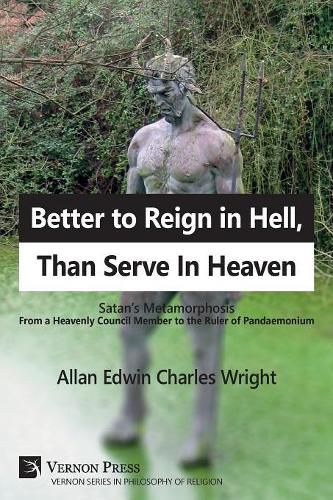Readings Newsletter
Become a Readings Member to make your shopping experience even easier.
Sign in or sign up for free!
You’re not far away from qualifying for FREE standard shipping within Australia
You’ve qualified for FREE standard shipping within Australia
The cart is loading…






This title is printed to order. This book may have been self-published. If so, we cannot guarantee the quality of the content. In the main most books will have gone through the editing process however some may not. We therefore suggest that you be aware of this before ordering this book. If in doubt check either the author or publisher’s details as we are unable to accept any returns unless they are faulty. Please contact us if you have any questions.
In this monograph, I argue that Satan was not perceived as a universal malevolent deity, the embodiment of evil, or the ruler of Pandaemonium within first century Christian literature or even within second and third century Christian discourses as some scholars have insisted. Instead, for early Christian authors, Satan represented a pejorative term used to describe terrestrial, tangible, and concrete social realities, perceived of as adversaries. To reach this conclusion, I explore the narrative character of Satan selectively within the Hebrew Bible, intertestamental literature, Mark, Matthew, Luke, Q, the Book of Revelation, the Nag Hammadi texts, and the Ante-Nicene fathers.
I argue that certain scholars’ such as Jeffrey Burton Russell, Miguel A. De La Torre, Albert Hernandez, Peter Stanford, Paul Carus, and Gerd Theissen, homogenized reconstructions of the New Testament Satan as the universalized incarnation of evil and that God’s absolute cosmic enemy is absent from early Christian orthodox literature, such as Mark, Matthew, Luke, Q, the Book of Revelation, and certain writings from the Ante-Nicene Fathers. Using Jonathan Z. Smith’s essay Here, There, and Anywhere, I suggest that the cosmic dualist approach to Satan as God’s absolute cosmic enemy resulted from the changing social topography of the early fourth century where Christian insider and outsider adversaries were diminishing. With these threats fading, early Christians universalized a perceived chaotic cosmic enemy, namely Satan, being influenced by the Gnostic demiurge, who disrupts God’s terrestrial and cosmic order. Therefore, Satan transitioned from a here,
insider, and there,
outsider, threat to a universal anywhere threat. This study could be employed as a characterization study, New Testament theory and application for classroom references or research purposes.
$9.00 standard shipping within Australia
FREE standard shipping within Australia for orders over $100.00
Express & International shipping calculated at checkout
This title is printed to order. This book may have been self-published. If so, we cannot guarantee the quality of the content. In the main most books will have gone through the editing process however some may not. We therefore suggest that you be aware of this before ordering this book. If in doubt check either the author or publisher’s details as we are unable to accept any returns unless they are faulty. Please contact us if you have any questions.
In this monograph, I argue that Satan was not perceived as a universal malevolent deity, the embodiment of evil, or the ruler of Pandaemonium within first century Christian literature or even within second and third century Christian discourses as some scholars have insisted. Instead, for early Christian authors, Satan represented a pejorative term used to describe terrestrial, tangible, and concrete social realities, perceived of as adversaries. To reach this conclusion, I explore the narrative character of Satan selectively within the Hebrew Bible, intertestamental literature, Mark, Matthew, Luke, Q, the Book of Revelation, the Nag Hammadi texts, and the Ante-Nicene fathers.
I argue that certain scholars’ such as Jeffrey Burton Russell, Miguel A. De La Torre, Albert Hernandez, Peter Stanford, Paul Carus, and Gerd Theissen, homogenized reconstructions of the New Testament Satan as the universalized incarnation of evil and that God’s absolute cosmic enemy is absent from early Christian orthodox literature, such as Mark, Matthew, Luke, Q, the Book of Revelation, and certain writings from the Ante-Nicene Fathers. Using Jonathan Z. Smith’s essay Here, There, and Anywhere, I suggest that the cosmic dualist approach to Satan as God’s absolute cosmic enemy resulted from the changing social topography of the early fourth century where Christian insider and outsider adversaries were diminishing. With these threats fading, early Christians universalized a perceived chaotic cosmic enemy, namely Satan, being influenced by the Gnostic demiurge, who disrupts God’s terrestrial and cosmic order. Therefore, Satan transitioned from a here,
insider, and there,
outsider, threat to a universal anywhere threat. This study could be employed as a characterization study, New Testament theory and application for classroom references or research purposes.